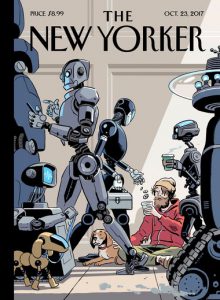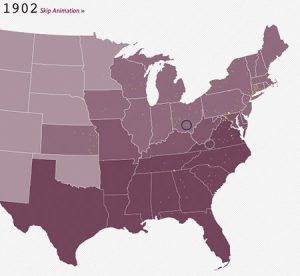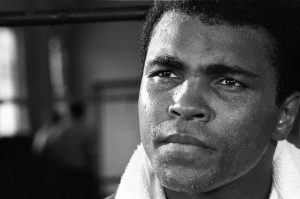
Even for the most accomplished of smart ass, wise guy, artist provocateurs, political art is dicey. Art can be political. But if it is, it better also be very good.
So… Banksy has a hotel in the West Bank city of Bethlehem called Walled Off. Okay. And he threw a street party to mock-celebrate the 100th anniversary of the Balfour declaration:
People from the nearby Aida refugee camp said afterwards they objected to the way the event had used Palestinian children as the centrepiece of the performance. “We came because we didn’t like the use of the British flags or the way they were using Palestinian children,” said Munther Amira, a prominent activist from Aida who planted a large Palestinian flag in the middle of a cake.
…
Banksy’s rendering of a British street party was intended to satirise other celebrations, including the dinner on Thursday, at which guests will include the British prime minister, Theresa May, and her Israeli counterpart, Benjamin Netanyahu.Several dozen Palestinian children had been invited to the event, which included scorched bunting and flags, cakes and helmets painted with union flags set at a table beneath the looming concrete separation wall.
The event also included the unveiling of a new work by Banksy, etched into the concrete of the wall: a mock apology from Queen Elizabeth II to the Palestinians reading “Er … sorry”.The Balfour declaration was the result of discussions between British Zionist leaders seeking political recognition of their goals for Jewish statehood and British politicians embroiled in the first world war.
Whoever Banksy is, his instinct to bring attention to Palestinian suffering is well-chosen but also lousy with pitfalls. Once any artist begins to make statements of expression using actual people, their stories, histories and emotions, they are using much more than words, paint, film or movement. I’m not convinced that it can’t or should not be done – it has and will again. But again: err first on the side of excellence. Good work is easily marginalized if it can be dismissed as manipulative self-promotion.


 When it all began is as clear of a question as when it might end. Actual Nazis on violent parade (is there another kind of Nazi parade?) in a public square has brought the question of white supremacy out of the shadows for the time being. Hopefully the moment lasts a while longer to
When it all began is as clear of a question as when it might end. Actual Nazis on violent parade (is there another kind of Nazi parade?) in a public square has brought the question of white supremacy out of the shadows for the time being. Hopefully the moment lasts a while longer to  It’s back to school time! Lunch pails and school slates may have given way to Uber eats and iPads, but one anachronism that remains is the ability for donors to get their kids into the best schools. With the Trump Justice Department launching a dubious new project targeting discrimination against white students in university admissions policies, I’m not going to explain why a diverse population in any university is not just a nice thing, but inarguably a crucial component in a
It’s back to school time! Lunch pails and school slates may have given way to Uber eats and iPads, but one anachronism that remains is the ability for donors to get their kids into the best schools. With the Trump Justice Department launching a dubious new project targeting discrimination against white students in university admissions policies, I’m not going to explain why a diverse population in any university is not just a nice thing, but inarguably a crucial component in a 
 In tribute to the great
In tribute to the great  Like smartphones teach us to be dumb – to not know things, to not be able to find our way except by using the device – we are also learning how to forget the past. Or how to remember it inaccurately, disconnected from the forks in the road where our path darkened and we lost something irretrievable, something we did not make nor deserve but that came from us and birthed us, was us, the best and the worst, that pushed us in the right direction because we were scared to go on our own until we learned we could pull ourselves there if we could just join enough hands.
Like smartphones teach us to be dumb – to not know things, to not be able to find our way except by using the device – we are also learning how to forget the past. Or how to remember it inaccurately, disconnected from the forks in the road where our path darkened and we lost something irretrievable, something we did not make nor deserve but that came from us and birthed us, was us, the best and the worst, that pushed us in the right direction because we were scared to go on our own until we learned we could pull ourselves there if we could just join enough hands.
